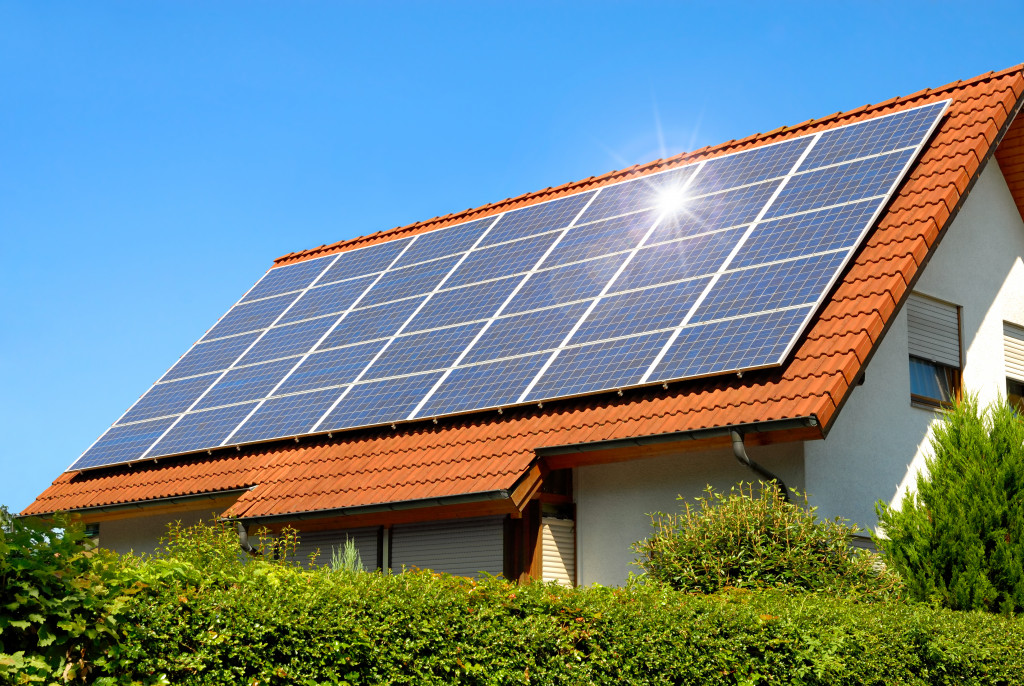Green home construction is building a home in an environmentally sound and sustainable way. There are many benefits to doing this. Some of the most notable benefits include:
- Reduced energy consumption
- Reduced environmental impact
- Increased durability and reduced maintenance costs
- Improved indoor air quality
- Better thermal comfort
Tips for Sustainable Home Construction
Here are some tips for making your construction process and home sustainable.
1. Educate yourself about green construction.
The more you know about green construction, the easier it will be to implement sustainable building practices into your project. Many resources are available today, including online courses, books, and magazine articles. You can also attend green building workshops and conferences to learn from experienced professionals.
2. Cooperate with your local green building council.
Many communities have green building councils that promote sustainable construction practices. Cooperating with these organizations can help you learn more about green home building and connect with other builders interested in sustainability.
3. Educate your contractor about green construction methods.
Your contractor is an integral part of the construction process, but many builders are not familiar with the principles of green construction. Ensure that you educate them about the benefits of sustainable building practices and how they incorporate these into your project.
4. Make use of green building software.
There are many types of green building software available today. This software can help you design a more sustainable home and evaluate the environmental impact of your construction project.
5. Minimize excavation and landfill waste.
Whenever possible, minimize the amount of earth that needs to be moved. That will help reduce the environmental impact of your project. Also, try to source building materials that do not require landfill disposal.
6. Comply with SWPPP requirements.
Any construction project must have a stormwater pollution prevention plan (SWPPP) and undergo inspection. Ensure that your construction crew follows all the requirements to stay compliant.
7. Use recycled and reclaimed materials in your construction project.
Reclaimed materials are from the waste of other construction projects. Recycled materials are reused from other products. There are many types of recycled and reclaimed materials that you can use in home construction projects. For example, you can use lumber reclaimed from demolished buildings, recycled glass for windows and counter tops, and recycled metal. Using recycled and reclaimed materials can help reduce the amount of waste produced during the construction process and save you money on your building costs.
8. Choose environmentally friendly products.
There are many products on the market today designed to be more sustainable. Some examples include low-VOC paints, Energy Star appliances, and sustainably harvested flooring materials. You can also incorporate bamboo, cork, and straw bale into your design.
9. Make use of natural ventilation.
Natural ventilation is a green building technique that uses the power of the wind to cool and ventilate buildings. You can use this technique with other green building methods, such as using insulation made from recycled materials.
10. Install a green roof.
A green roof is covered with vegetation. This type of roof can help regulate your home’s temperature and reduce the energy needed to cool or heat your house.
11. Use solar power or wind energy.

Installing a solar panel or wind turbine can reduce your reliance on traditional energy sources and help you become more environmentally friendly. These systems can be expensive to install, but they can provide a significant return on investment over time.
12. Use water-saving appliances and fixtures.
Water is a precious resource, and it is vital to use it wisely. Installing water-saving appliances and fixtures can help you reduce your water usage and save money on your monthly utility bills.
13. Install a rain barrel.
A rain barrel is a simple device that collects rainwater from your roof. You can use this water to irrigate your yard or wash your car or bike.
14. Choose energy-efficient lighting.
Lighting accounts for a significant portion of the electricity used in a home. Choosing energy-efficient bulbs can help you reduce your electricity bills and save money over time.
15. Plant a tree.
One of the easiest and most effective ways to make your home more sustainable is to plant a tree. Trees provide shade in the summer, reduce wind resistance in the winter, and improve air quality all year round.
16. Plan your landscaping wisely.
The plants and trees you choose for your yard can greatly impact the environment. It is essential to select species native to your area and that will not require excessive irrigation or maintenance.
17. Use smart technology to monitor your energy usage.
Smart technology can help you track your energy usage and identify ways to reduce your consumption. Installing a smart meter or using energy management software can help you save money and be more environmentally responsible.
18. Educate your family and friends about green construction.
One of the best ways to mainstream sustainable construction is to educate others about it. Show your family and friends how easy it is to make small changes that can have a significant impact.
Build Your Green Home
The best way to become a green home builder and owner is to educate yourself about the latest sustainable construction techniques. By following the tips in this article, you can incorporate green building methods into your home construction and help make your home more environmentally friendly. You can then help educate others to spread the word about sustainable home building.

